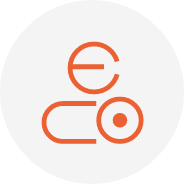Bolt-Tightening Scenarios in Which the Yield-Point & Angle Method Should Not Be Used
In modern industrial production, bolt tightening is a critical step for ensuring secure component joints. The yield-point & angle tightening strategy can significantly increase bolt-utilization rates, enhance joint robustness, and reduce failures such as loosening or breakage. However, this method is not suitable for certain working conditions.

Limitations of the Yield-Point & Angle Method
The essence of the yield-point & angle method is to control the additional rotation applied after the bolt has been tightened past its yield point, thereby generating the required clamp force. When the consistency of the joint members is poor—especially in soft-joint applications involving plastics, rubber, or other low-modulus materials—the drawbacks become pronounced. Because these soft materials have a low elastic modulus, the additional angle required to reach the yield point varies widely from joint to joint. As a result:
Some joints may end up with excessive torque, even causing bolt fracture;
Others may fail to reach the yield point, resulting in insufficient torque and large clamp-force deviations, seriously compromising tightening quality.
Danikor Intelligent Screwdriver Solution
To meet the challenges of soft-joint conditions, Danikor intelligent screwdrivers provide more flexible and smarter tightening strategies. Using proprietary high-precision algorithms, the tool supports multiple strategies—clamping torque, gradient, angle, yield point, etc. Its multi-stage process-control function allows custom multi-step tightening sequences. Real-time monitoring of gradient and angle effectively solves process issues such as floating (false) tightening and thread stripping. This multi-step strategy is particularly effective for soft joints, significantly reducing torque decay and ensuring final tightening quality.
In addition, the Danikor screwdriver offers full-process data traceability—real-time upload of tightening data to the MES, local storage of large volumes of results and curves, and support for CPK analysis and process optimization. Every step and parameter is accurately monitored and recorded; any anomaly can be quickly located and resolved, guaranteeing stable and consistent product quality.
Application Scenarios & Advantages
Danikor intelligent screwdrivers are widely used in new-energy vehicles, automotive electronics, 3C electronics, communications, household appliances, and more.
New-energy vehicle power-battery assembly: For long screws, Danikor provides multi-channel feeding combined with error-proofing and full data traceability, helping leading battery manufacturers boost productivity and quality.
3C electronics industry: High-precision control and intelligent management meet the assembly demands of precision components, ensuring every screw reaches the specified fastening state.
Beyond technological advantages, Danikor’s intelligent management system delivers a one-stop tightening solution. Its sensor-controlled tools achieve a torque-control standard-deviation accuracy of ±1.67 %, covering a torque range of 1–200 N·m and adapting to many high-precision assembly scenarios. This high accuracy and flexibility effectively handle complex conditions, ensuring reliable and stable production.
In summary, although the yield-point & angle method offers benefits, it has clear limitations in soft-joint applications. Danikor’s intelligent screwdriver, with its multi-step tightening strategies and intelligent management, provides an effective remedy. Its high-precision control, multi-strategy support, and full-process data traceability not only improve tightening quality but also significantly enhance production efficiency and management standards.











